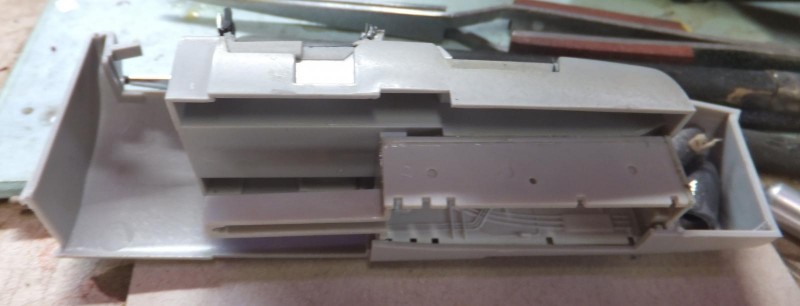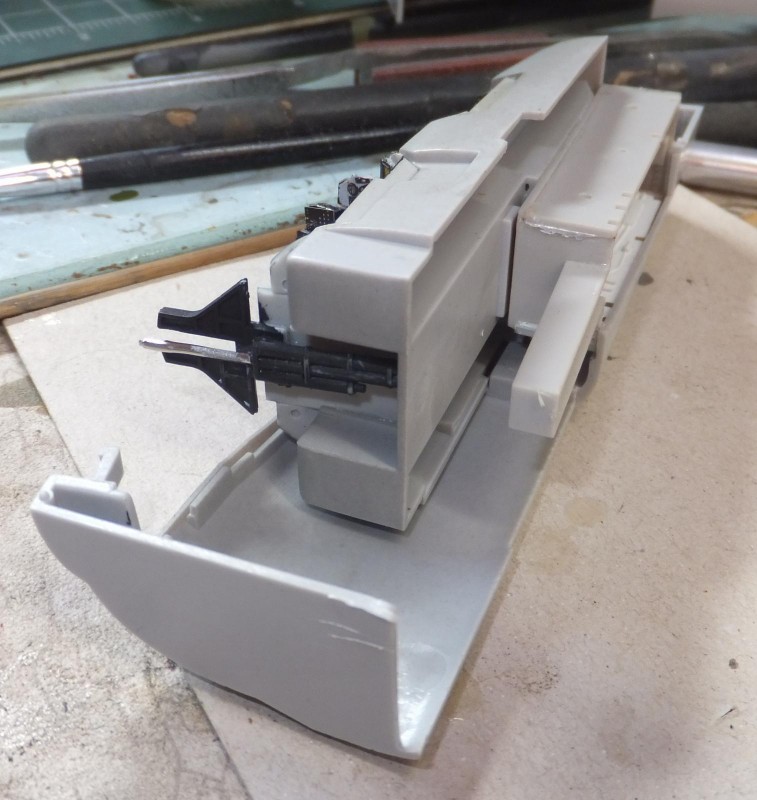With the nose wheel bay completed now time to attach it to cockpit floor.
The canopy lift shock actuator is painted black and molotow chrome for the piston.
Now the part of the build that is notorious for headaches on the Hase Tom. Read the horror stories with the Aries resin pit for this cat. Thd kit parts are good enough for me and even then with the base kit parts I still had to wrestle in getting the halves to close. Even after several test fits before final. Once I got them closed I wrapped it up with tape and rubber bands and let it sit overnight.
-

1. Test test test
2. nose weights
-

1. make sure LH side of floor is located into notches on the LH fuselage
Next were in the instrument panels coamings. These are black and tan. First with the rear panel over the Rio's IP.
Then the pilots panel is checked for fitment and set aside while I enhance the IP with PE bits.
Next to work on the IP. Prepping it to attache the various PE bits.
1st I attach it to the coaming and work my way from top to bottom attaching the PE.
The bits always seem to be a bit wide, so have the coaming attached helps trim them a bit to make them fit better and aligned.
The I put that aside and let the cement set as these get knocked off quite easily with simple handling and installation.
I remove the rear decking from the sprue and attach it to the rear of the cockpit. It is white at the moment, but will be black once everything is in place.
Once the Ip has set, I install the IP carefully into the forward section of the cockpit. Whew it went in with room to spare.
Next to attach the nose and start working on the rear section. More to follow.